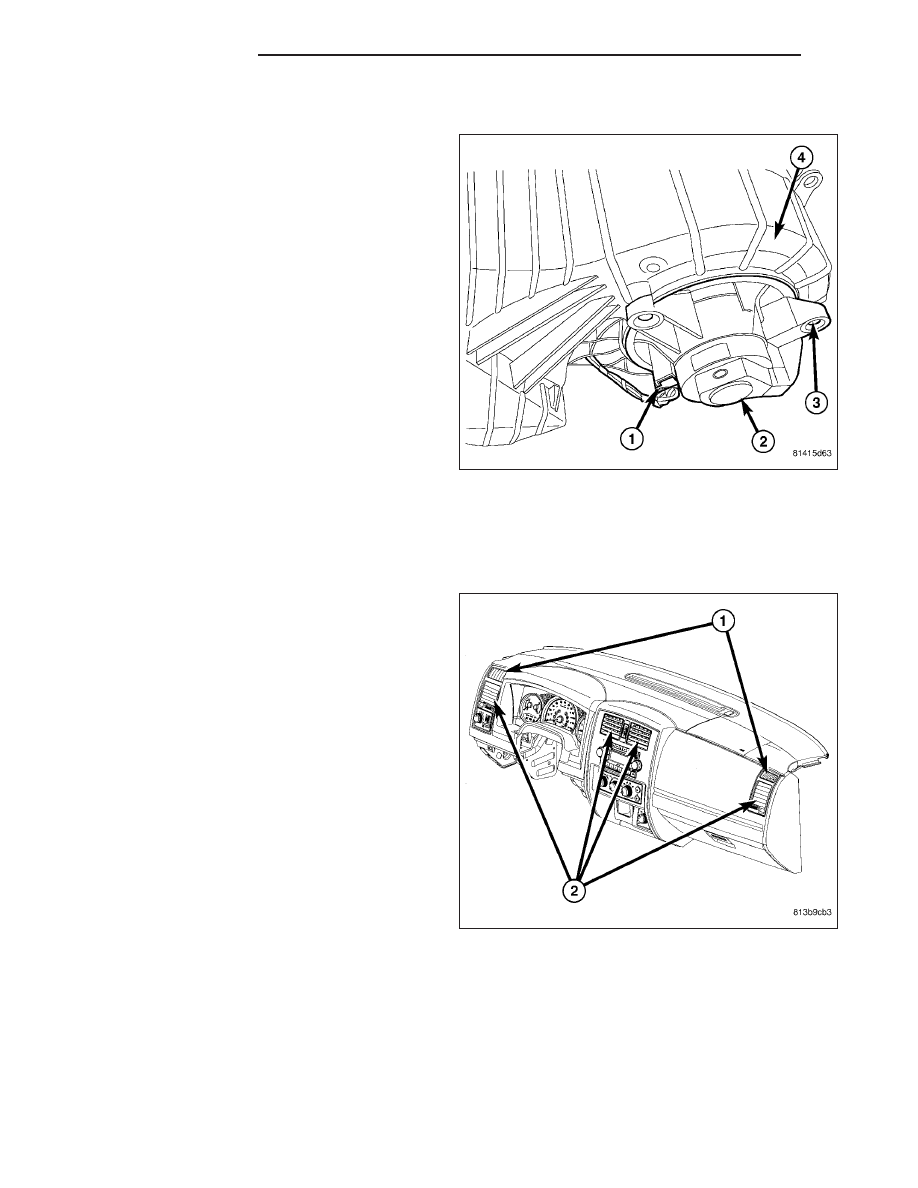Content .. 1292 1293 1294 1295 ..
Dodge Dakota (ND). Manual - part 1294

INSTALLATION
1. Position the blower motor (2) into the HVAC hous-
ing (4).
2. Install the three screws (3) that secure the blower
motor to the HVAC housing. Tighten the screws to
2 N·m (17 in. lbs.).
3. Connect the wire harness connector (1) to the
blower motor.
4. Reconnect the negative battery cable.
OUTLET-AIR
DESCRIPTION
There are two side window demister air outlets (1).
One located at each end of the instrument panel near
the A-pillars. The airflow from the side window demis-
ter air outlets is directed by fixed vanes in the demis-
ter outlet grilles and cannot be adjusted. The side
window demister air outlets are only serviced with the
instrument panel air outlets.
There are four instrument panel air outlets (2). One air
outlet is located near each outboard end of the instru-
ment panel facing the rear of the vehicle and two air
outlets are located at the top of the instrument panel
center bezel. Each of the instrument panel air outlets
contain a grille with movable vanes that are used to
direct or shut off the flow of the conditioned air leaving
the instrument panel outlets. The instrument panel air
outlets and grilles cannot be serviced separately
(Refer to 23 - BODY/INSTRUMENT PANEL/CLUSTER
BEZEL - REMOVAL), (Refer to 23 - BODY/INSTRU-
MENT
PANEL/INSTRUMENT
PANEL
CENTER
BEZEL - REMOVAL) and (Refer to 23 - BODY/IN-
STRUMENT PANEL/IP PASSENGER SIDE BEZEL - REMOVAL).
24 - 174
DISTRIBUTION
ND